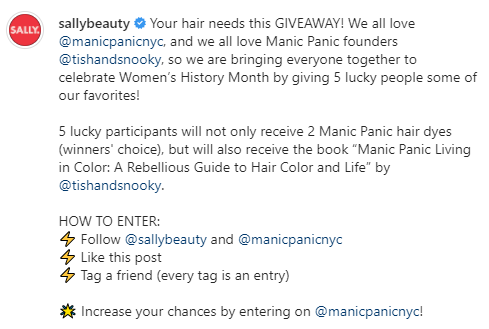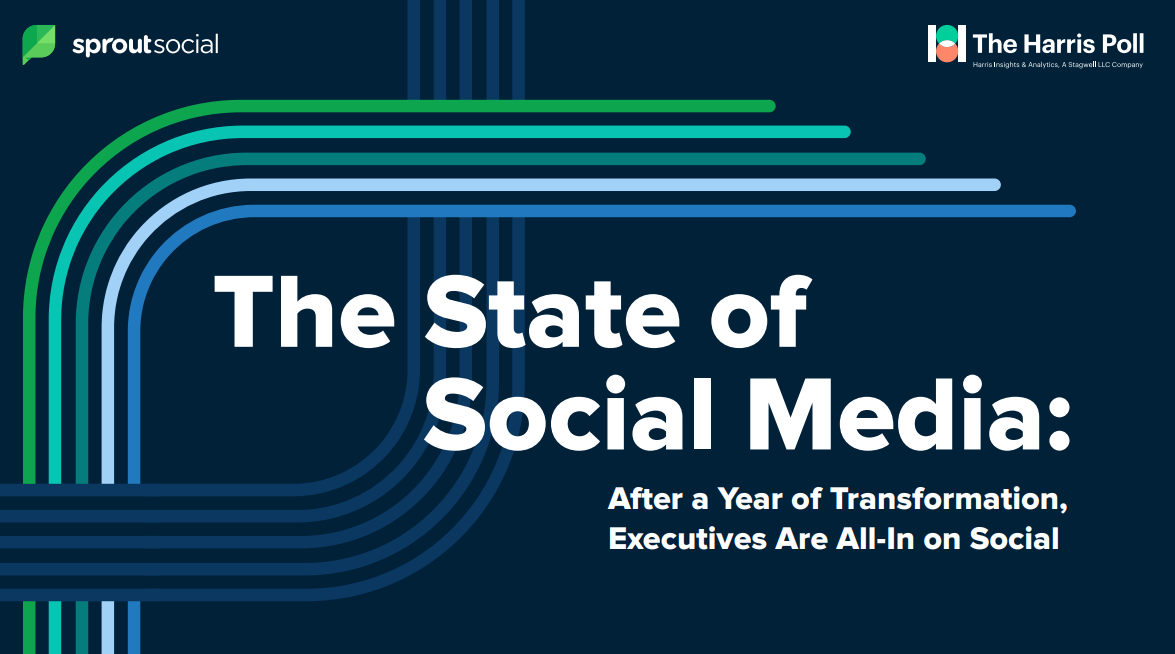Want to level up your reputation while boosting sales? Try co-marketing!
After all, partnering up with fellow businesses is a proven way to scale.
But co-marketing partnerships represent so much more than just joint promotions.
Food for thought: The Sprout Social Index™ notes that 58% of brands are laser-focused on raising awareness (while 35% are attempting to grow their audiences, too). Partnerships are key to doing both.
Because working alongside other businesses in your industry empowers you to build relationships and leverage your brand as an invaluable resource.
Curious about co-marketing? This guide breaks down everything you need to know and how to get started.
What is co-marketing, anyway?
Let's kick things off with a quick definition.
Co-marketing is a strategy that involves brands or organizations partnering to expand their reach. Typically, companies involved in co-marketing campaigns share common audiences or work within the same industry (but are not direct competitors).
The concept is simple enough: working side-by-side with another brand is a way for both parties to introduce themselves to new audiences, drive additional revenue and build awareness. Everybody wins, right?
While the concept isn't exactly groundbreaking, co-marketing relationships are totally different from the typical partnerships we see brands make today (such as affiliate programs, brand ambassadorships or influencer marketing).
The key difference? With co-marketing campaigns, the collaborating brands are treated as equals. This rings true when it comes to both promotion and doing the actual legwork of putting together the campaign.
3 common co-marketing examples (and why they work)
So, what does co-marketing actually look like in practice? Here are a few marketing campaign ideas for inspiration:
Partnering up to educate your audience
Whether in-person or through digital events (such as webinars), educating your audience is perhaps one of the easiest ways to get on board with co-marketing in B2B.
Social platforms like Twitter and LinkedIn make it a cinch to drive sign-ups and build buzz for webinars. Such events are a brilliant way to drive sign-ups and provide legitimate value to your audience.

Co-hosting promotions and product launches
Co-marketing is perfect for product launches, helping you get the word out and build buzz when you need it the most.

Giveaways, contests and brand takeovers are all popular campaign ideas that allow multiple brands to leverage each other's followings to get as many eyes on their promotions as possible.

Creating a totally new resource for a shared audience
The idea here is that two heads are better than one when it comes to sharing insights with your audience.
For example, the Harris Poll and Sprout Social teamed up for our social media investment report that served as an invaluable resource for both parties. This highlights how co-marketing campaigns can complement the strengths of two totally different brands.

Co-marketing vs co-branding (and why they're different)
The terms 'co-marketing' and 'co-branding' are often used interchangeably but they're far from the same.
In short, co-branding typically involves two brands partnering up to launch a new product and using their respective name recognition to build buzz. Co-branding campaigns are typically reserved for brands with larger audiences and are common in the world of ecommerce (think: brand collabs, limited edition runs of products).
It’s a MUST! #LisaFrankxCrocs https://t.co/zKdhZ7mFUi
— Lisa Frank (@LisaFrank) November 29, 2021

Co-marketing is the untapped goldmine for brands seeking to rocket their growth trajectory. By harnessing synergies through strategic partnerships, businesses can amplify each other's reach and impact - creating a win/win scenario that drives faster results than solo efforts.
Co-marketing 107 offers a treasure trove of insights into how collaborative brand partnerships can propel growth at lightning speed, unlocking new markets and customer bases while amplifying your reach without sacrificing identity.
Co-marketing stands as a cornerstone of rapid growth, illustrating how complementary brands can amplify each other's reach and impact in the market. This primer guides aspiring business owners towards leveraging brand partnerships for accelerated success.
‘Co-marketing 102: A Practical Guide to Building Thriving Brand Partnerships’ offers valuable insights into harnessing the power of brand collaboration for accelerated growth, unravelling strategies that amplify reach and create mutually beneficial relationships in today' s competitive landscape.


![India Medical Devices Market: Driving Forces and Disruptive Trends [2029]](https://antiochtenn.com/zb_users/upload/2025/07/20250727204208175362012817595.jpg)











